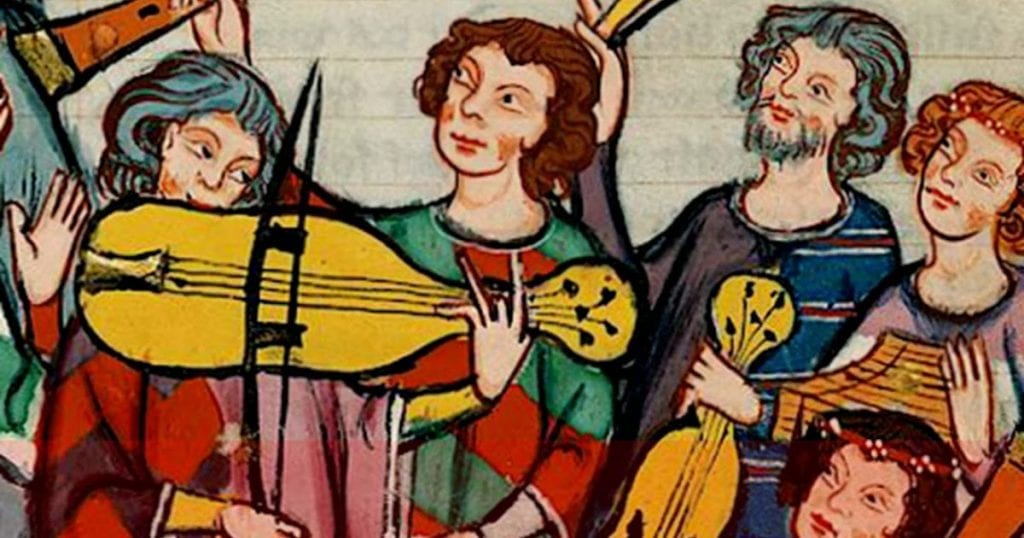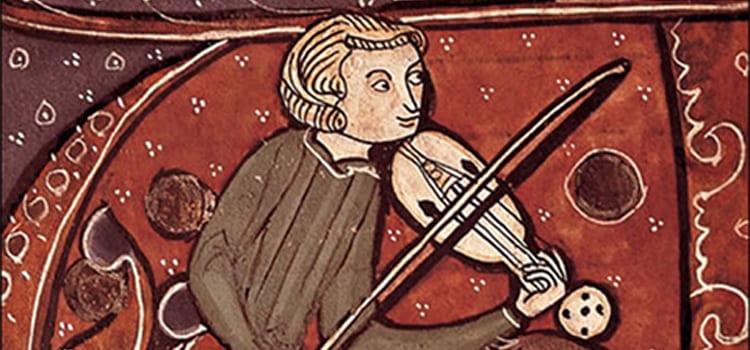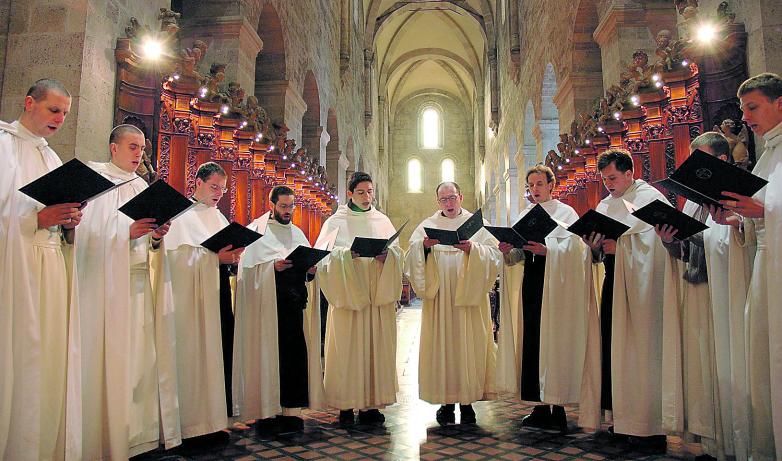
The Middle Ages is considered the darkest period of humanity. A time of darkness and regression. A stain on the history of Western civilization.
Formally, it is a categorization that only includes Europe. It has been understood since the year 476. The fall of the Western Roman Empire is the starting point. What music did this historical stage leave us?
The end of the Middle Ages is marked by the Fall of the Eastern Roman Empire, better known as the Byzantine Empire, in 1453. This date coincides with the creation of the printing press and the publication of the Gutenberg Bible.
Some historical texts fix the end of the Middle Ages with the arrival of Christopher Columbus in America in 1492.
The Middle Ages: blood, sweat and tears
The medieval period is almost inextricably associated with the Inquisition, a figure promoted in part by the Catholic Church. It was about punish - in most cases, with the death penalty - those who are considered heretics.
However Catholics also ended up being victims of persecutions in Protestant-dominated territories. These were bad times for anyone with a slight suspicion of practicing witchcraft. Normally his days ended in the hands of an inquisitor judge.

The crusades were campaigns driven by the pope with the aim of reestablishing Roman apostolic control over the Holy Land. And they took place in this period. Muslims, Jews, Orthodox Christians, Greeks, Russians, Mongols and all those who opposed the papal figure. They were all within the targets to be shot down
Science and art: stagnation and submission
The voices most critical of the medieval period assure that during this time, advances in science are non-existent. They attribute this "stagnation" to the lack of scientific methods. They directly blame the fear generated by the "Holy Inquisition." Anyone who raised doubts about the established precepts ran the risk of being accused of heresy. The goal was to end up at the stake (or beheaded, or by hanging).
In art, these same critics argue that the thousand years between the fourth and fifteenth centuries represent lost time. They base this lapidary statement on compare Medieval culture with earlier and later historical periods. Greece and the various legacy manifestations of the Greco-Roman tradition on the one hand. The Renaissance and the awakening of consciousness that would come with the Modern Age, on the other.
The capitalist system and the concepts of the Modern State that would be promoted in Europe after the XNUMXth century, had their origins in anti-feudal state approaches that were gestated in the second half of the Middle Ages.
In art, among other manifestations, highlights an easily identifiable architectural stream and, to the surprise and discomfort of some, enduring through time, as is the Gothic style.
And on a musical level, in the Middle Ages the musical notation system was born that would change the world forever: the Pentagram.
Medieval Music
The music of the Middle Ages can be divided into two large groups:
Sacred music: closely linked to the Catholic Church and monasteries, whose sole purpose was to worship God. Although initially the ecclesiastical authorities viewed the entire musical tradition with a frown, they soon discovered an efficient vehicle to indoctrinate faithful and believers.
It also allowed them to skip a major difficulty for their purposes: the vast majority of the inhabitants of Medieval Europe were illiterate. Through the songs, they could proclaim the sacred texts, without having to give people the “power” to know how to read.
Profane Music: Broadly speaking, it refers to all that which was sung and performed outside the "dominions of God." Poets, members of the aristocracy, were its main promoters. Troubadours and minstrels also fall into this category.
The themes of the songs were quite varied, the most popular being those that sought to enhance love and romance, as well as heroic deeds.
The religious authorities did not approve no musical manifestation generated in the popular bosom, without a sacred purpose.
The minstrels -Artists who combined singing and music with circus art- were the most persecuted, sometimes being accused of heretics.
La lack of “official” recognition of pagan manifestations, (a status that was only granted by the Catholic Church), resulted in few historical documents that give clear signals about how Medieval popular music sounded.
Beyond some pictorial representations where the musicians were captured while they performed their art, the few “verifiable” sources are the writings emanating from the Catholic Church.. In these "reports" they ranted, among other elements, against the "immodest" lyrics sung by troubadours and minstrels.
The Gregorian Chants
If a iconographic music product from the Middle Ages, it is the Gregorian Chant.

They owe their name to Pope Gregory I, who, towards the end of the XNUMXth century, promoted the unification of the liturgical music used at Masses. Until that moment, each geographic region along the old continent had its own routine to be performed in the churches.
Different from what had been happening until then, the Gregorian Songs adopt Latin as the language for their praises. This led to the psalms used in the masses having to be translated into Latin prose.
Initially, they were sung solemn hymns which, in most cases, were performed from memory by a chorus of male voices. Little by little, at the initiative of the Catholic Church, spaces were opened to improvisation, with the purpose of exalting the feelings of those who participated in the celebrations of God.
Like almost all the music of the Middle Ages, the Gregorian Chants are monodic (in one voice). Precisely the later polyphony, whose development was possible thanks to the appearance of the pentagram (which also allowed the precise transmission of musical knowledge, without depending on human memory), marked the end of the era of maximum splendor of this liturgical tradition.
Musical instruments
Although most of the musical manifestations of the Middle Ages have a marked (and in some cases exclusive) vocal component, this period also allowed the development of a good number of musical instruments, most of which have survived, with some variations, to this day.
Among the most emblematic are harps, lyres, monochord and guitar among stringed instruments. The flute and the organ also stand out.
Image sources: MusicaAntigua.com / WordPress.com katherinloaiza98 - WordPress.com Ancient Music in Chile